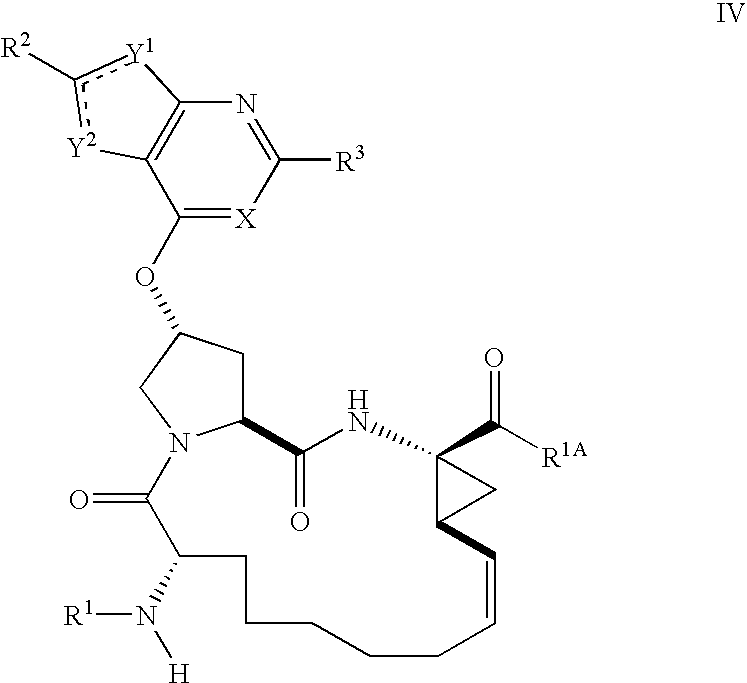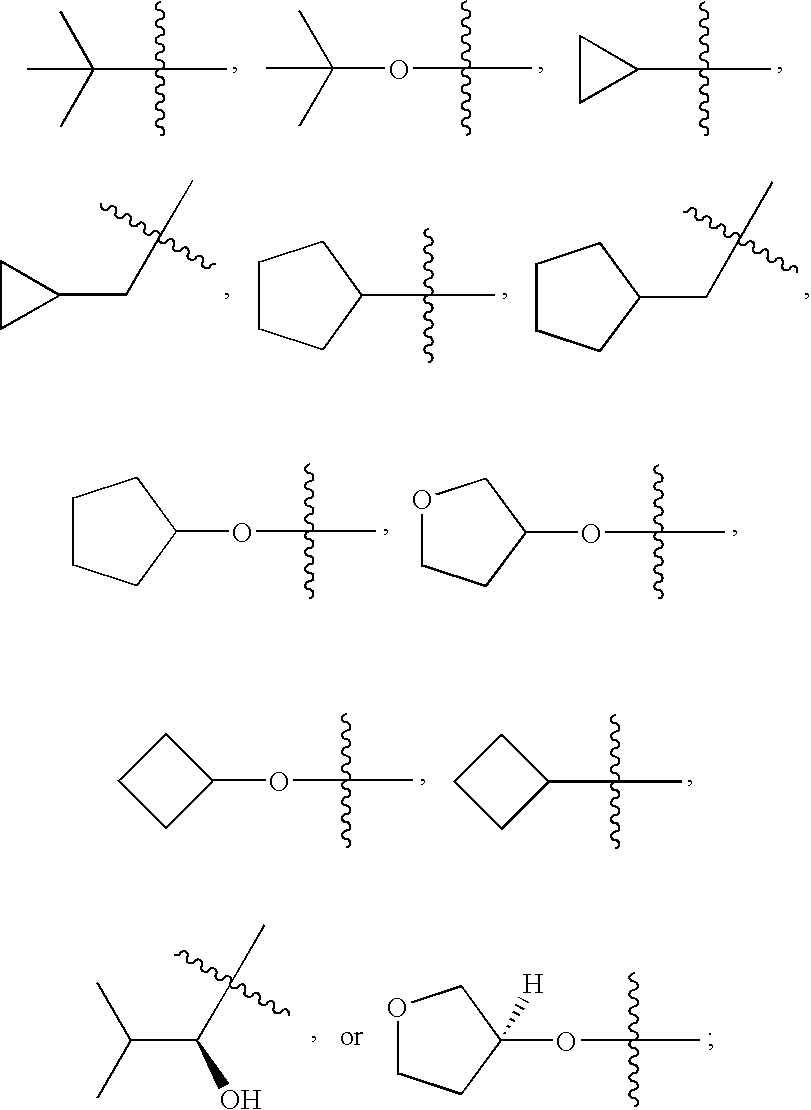Inhibitors Of Hepatitis C Virus Protease, And Compositions And Treatments Using The Same
a technology of hepatitis c virus and protease, which is applied in the direction of peptides, drug compositions, peptides, etc., can solve the problems of relatively poor efficacy and unfavorable side-effect profiles of present treatment approaches for hcv infection
- Summary
- Abstract
- Description
- Claims
- Application Information
AI Technical Summary
Problems solved by technology
Method used
Image
Examples
example 1
3-Thienylamine oxylate
[0388]
[0389] Methyl 3-aminothiophene-2-carboxylate (10.0 g, 64 mmol, 1.0 equiv) was refluxed in 1N sodium hydroxide (NaOH) (318 mL, 320 mmol, 5.0 equiv) for 2 h. The reaction mixture was cooled to 0° C. and acidified to pH 5 using 12.4 N hydrochloric acid (HCl). The crude beige acid was filtered, and the solids were taken-up in 1-propanol (100 mL), treated with oxalic acid (11.58 g, 128 mmol, 2.0 equiv) and heated at 38° C. for 1 h. The off-white product was filtered and the solids were taken on without further purification (5.55 g, 46% yield): 1H NMR (400 MHz, DMSO-d6) δ 7.24 (dd, J=5.0, 3.0 Hz, 1H), 6.64 (dd, J=5.0, 1.3 Hz, 1H), 6.17 (dd, J=3.0, 1.5 Hz, 1H); LCMS (ESI+) for C4H5NS*C2H3O4 m / z 191 (M+H)+.
example 2
5-Pyridin-2-ylthieno[3,2-b]pyridin-7-ol
[0390]
[0391] 3-Thienylamine oxylate (5.55 g, 30 mmol, 1.0 equiv) and methyl 3-oxo-3-pyridin-2-ylpropanoate (5.67 g, 30 mmol, 1.0 equiv) were combined in a round bottom flask equipped with a Dean Stark reflux condenser and taken up in anhydrous toluene (100 mL). 4N HCl in 1,4-dioxane (0.733 mL, 3 mmol, 0.10 equiv) was added and the reaction mixture was refluxed for 12 h. The crude product was filtered and the black solids were taken on without further purification (6.02 g, 90% yield): 1H NMR (400 MHz, DMSO-d6) δ 8.79 (d, J=4.5 Hz, 1H), 8.26 (d, J=8.1 Hz, 1H), 8.01-7.97 (m, 1H), 7.92 (d, J=5.3 Hz, 1H), 7.53 (dd J=7.2, 4.9 Hz, 1H), 7.07 (s, 1H), 7.05 (d, J=5.3 Hz, 1H); LCMS (ESI+) for C12H8N2OS m / z 229 (M+H)+.
example 3
7-Chloro-5-pyridin-2-ylthieno[3,2-b]pyridine
[0392]
[0393] 5-Pyridin-2-ylthieno[3,2-b]pyridin-7-ol (3.0 g, 13 mmol, 1.0 equiv) was taken up in phosphorous oxychloride (POCl3) (100 mL) and refluxed for 6 h. The reaction mixture was concentrated in vacuo, and washed slowly with 1N NaOH. The organic layer was extracted with ethyl acetate, washed with saturated sodium chloride, dried over magnesium sulfate and concentrated in vacuo which gave a brown solid that was taken on without further purification (2.00 g, 62% yield): 1H NMR (400 MHz, DMSO-d6) δ 8.87 (d, J=4.04 Hz, 1H), 8.50 (d, J=8.1 Hz, 1H), 8.31 (d, J=5.6 Hz, 1H), 8.22 (s, 1H), 8.07 (dt, J=7.8, 1.8 Hz, 1H), 7.61-7.56 (m, 2H); LCMS (ESI+) for C12H7ClN2S m / z 247 (M+H)+.
PUM
| Property | Measurement | Unit |
|---|---|---|
| Molar density | aaaaa | aaaaa |
| Molar density | aaaaa | aaaaa |
| Molar density | aaaaa | aaaaa |
Abstract
Description
Claims
Application Information
 Login to View More
Login to View More - R&D
- Intellectual Property
- Life Sciences
- Materials
- Tech Scout
- Unparalleled Data Quality
- Higher Quality Content
- 60% Fewer Hallucinations
Browse by: Latest US Patents, China's latest patents, Technical Efficacy Thesaurus, Application Domain, Technology Topic, Popular Technical Reports.
© 2025 PatSnap. All rights reserved.Legal|Privacy policy|Modern Slavery Act Transparency Statement|Sitemap|About US| Contact US: help@patsnap.com



